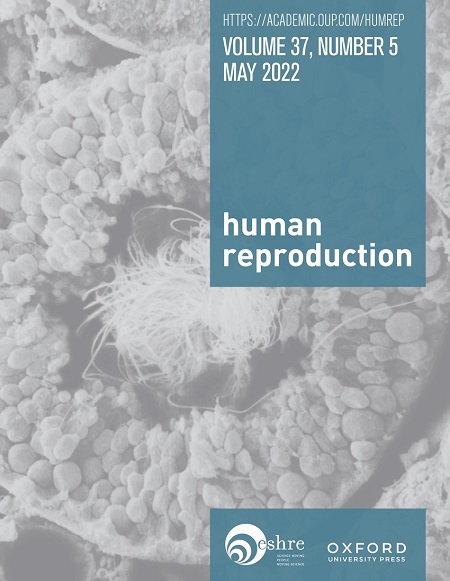Novel insights into the lipid signalling in human spermatozoa
IF 6
1区 医学
Q1 OBSTETRICS & GYNECOLOGY
引用次数: 0
Abstract
Infertility, affecting one in six couples worldwide, poses significant health and social challenges. While both male and female factors contribute to infertility, male infertility causes remain underexplored, with about 34% of cases classified as unexplained. A few studies focus on the role of lipids in male fertility, and some lipids are rising as key players in spermatozoa. This review highlights the importance of lipids, particularly phospholipids, neutral lipids, and glycolipids, in spermatozoa during capacitation and the acrosome reaction (AR). The dynamic lipid profile of human spermatozoa is crucial for their development, maturation, and fertilization capability. During epididymal maturation, sperm undergo crucial biochemical changes, including increased production of phosphatidylcholine and sphingomyelin, which enhance membrane integrity and mobility. Increased levels of ceramide affect membrane fluidity and signalling necessary for sperm function. As spermatozoa enter the female reproductive tract, they adjust their lipid content for capacitation and fertilization. Lipid signalling is crucial for human spermatozoa, influencing their viability and fertilization potential during transit through the female reproductive tract. Lysophosphatidic acid, abundant in seminal plasma, enhances sperm motility, facilitates the AR by promoting glycolysis and calcium influx, and is important for maintaining sperm viability. The remodelling of lipid rafts, enriched in cholesterol and sphingolipids, is essential for signal transduction and capacitation. Sphingolipids, particularly sphingosine 1-phosphate and ceramide, play significant roles in sperm capacitation and AR by promoting reactive oxygen species production and calcium signalling, respectively. Understanding these lipid dynamics will increase our knowledge of the complexity of sperm metabolism.人类精子中脂质信号传导的新见解
不孕不育影响着全世界六分之一的夫妇,对健康和社会构成重大挑战。虽然男性和女性因素都会导致不育症,但男性不育症的原因仍未得到充分研究,约34%的病例被归类为无法解释的。一些研究集中在脂质在男性生育能力中的作用,一些脂质在精子中扮演着重要的角色。这篇综述强调了脂质,特别是磷脂、中性脂和糖脂在精子获能和顶体反应(AR)过程中的重要性。人类精子的动态脂质分布对其发育、成熟和受精能力至关重要。在附睾成熟过程中,精子经历了关键的生化变化,包括磷脂酰胆碱和鞘磷脂的产生增加,从而增强了膜的完整性和流动性。神经酰胺水平的增加影响了精子功能所必需的膜流动性和信号。当精子进入雌性生殖道时,它们会调整其脂质含量以进行获能和受精。脂质信号对人类精子至关重要,影响其通过女性生殖道的生存能力和受精潜力。溶血磷脂酸富含精浆,可增强精子活力,通过促进糖酵解和钙内流促进AR,对维持精子活力具有重要意义。富含胆固醇和鞘脂的脂筏的重塑对信号转导和能化至关重要。鞘脂,尤其是鞘磷脂1-磷酸和神经酰胺,分别通过促进活性氧的产生和钙信号传导在精子获能和AR中发挥重要作用。了解这些脂质动力学将增加我们对精子代谢复杂性的认识。
本文章由计算机程序翻译,如有差异,请以英文原文为准。
求助全文
约1分钟内获得全文
求助全文
来源期刊

Human reproduction
医学-妇产科学
CiteScore
10.90
自引率
6.60%
发文量
1369
审稿时长
1 months
期刊介绍:
Human Reproduction features full-length, peer-reviewed papers reporting original research, concise clinical case reports, as well as opinions and debates on topical issues.
Papers published cover the clinical science and medical aspects of reproductive physiology, pathology and endocrinology; including andrology, gonad function, gametogenesis, fertilization, embryo development, implantation, early pregnancy, genetics, genetic diagnosis, oncology, infectious disease, surgery, contraception, infertility treatment, psychology, ethics and social issues.
 求助内容:
求助内容: 应助结果提醒方式:
应助结果提醒方式:


